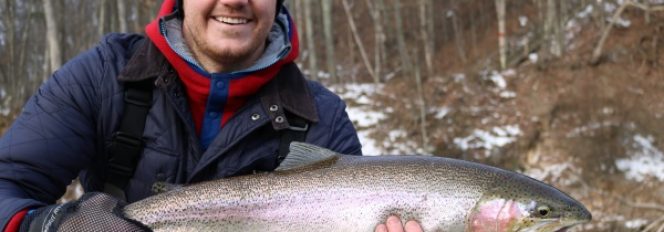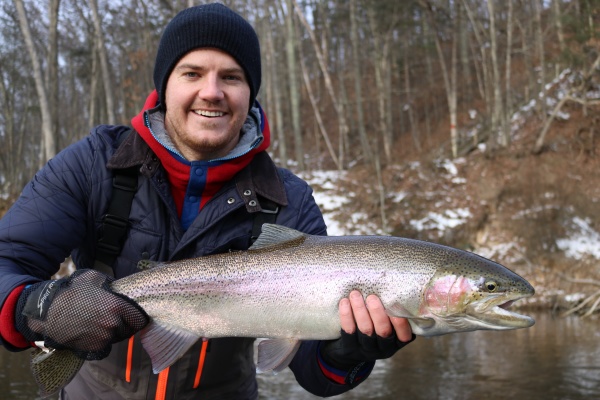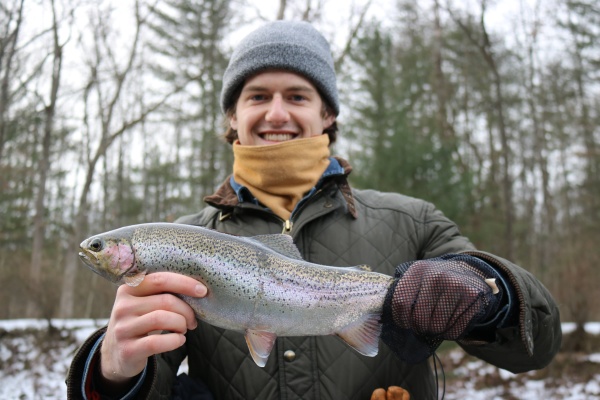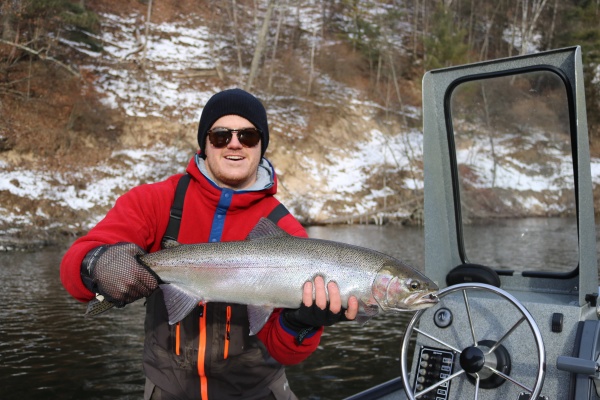David from Chicago pictured with a really nice brightly colored chrome hen.
Here’s David and his friend Mack form Chicago with some really nice steelhead caught during their winter steelhead trip in the middle of January.
Fishing steelhead in the middle of winter on the Muskegon river can be exciting as the majority of the steelhead will be concentrated in the deeper slower moving holes also known as “winter lies”. It’s not uncommon to hook multiple steelhead in one hole during these winter months. Fly presentations need to be slowed down, as the steelhead don’t move as far to chase flies like they do during warmer water temps above 40 degrees. During winter months, steelhead seek refuge in these slow moving deep holes or winter lies. These deep holes provide the best food source, cover, water temp and atmosphere for the steelhead to relax and rest throughout winter.
Mack from Chicago with a really nice 20+ inch rainbow trout in its transitionary stages of becoming a steelhead.
“Low & Slow Fly Presentation”
During winter months, steelhead move as little as possible for food. So, fly presentations need to be “low & slow”. Presentations are optimal when they are at the deepest depth of the hole and slowed down enough to give the steelhead time to wake up and see the presentation come through. Drift your presentation as low and slow as possible and cover as much of the hole as possible with your casts. This technique will help your presentation reach the front of the steelhead’s face and trigger a strike.
David pictured again with a another really nice chrome hen. This fish looks almost identical to the 31-inch, 14lb hen pictured above compared to this 28-inch, 12lb hen. The uniquely speckled dots on the gill plate near the eyes prove they are in fact different fish.
Focus your presentations on the inside and outside seems of current breaks. Concentrate on the slower moving water on both sides of current breaks of faster moving water. These positions are usually found in and around obstructions (i.e rocks, log jams) throughout the length of the run. Steelhead like to sit just on the slower water edges of faster moving current breaks. Cover as much of the hole as possible starting with short casts and work your way out to longer. While fishing these winter lies patients, persistence, and a positive attitude is the best mindset to have. If one hole doesn’t produce, move to the next hole and continue the steps above.
post by: Jon Fortuna



